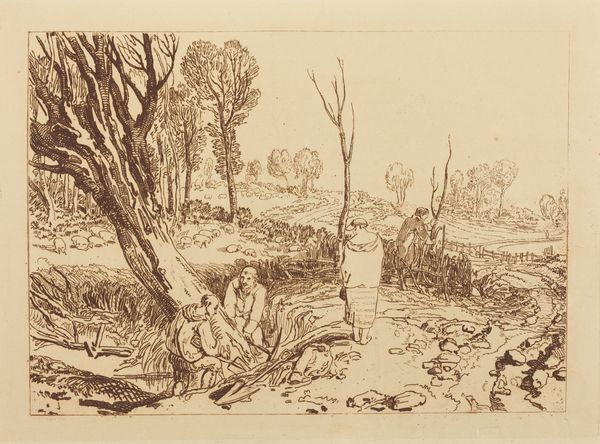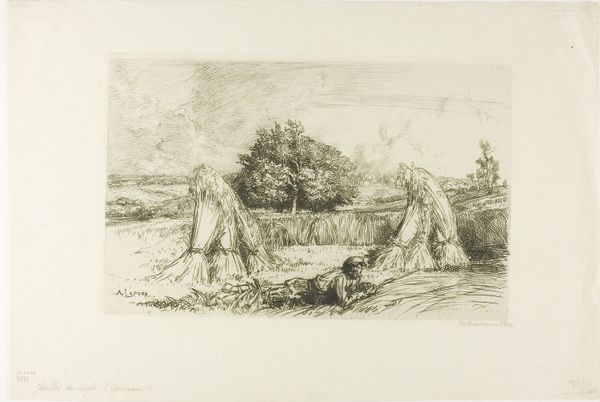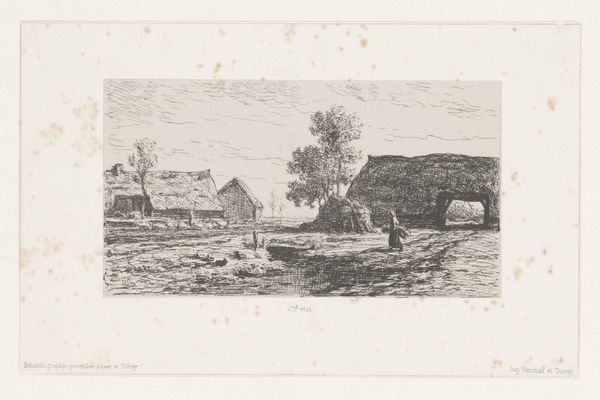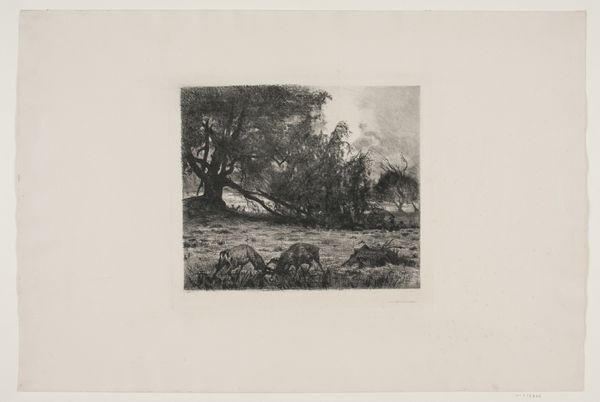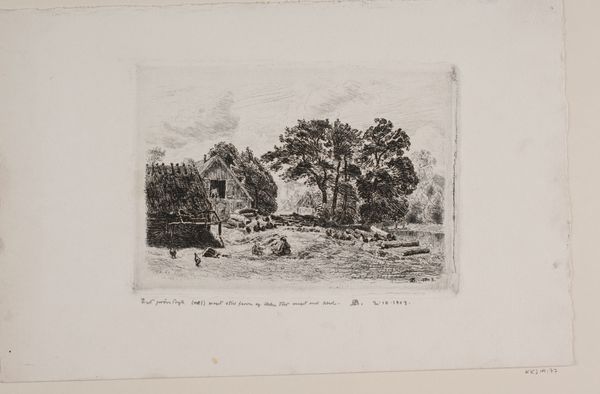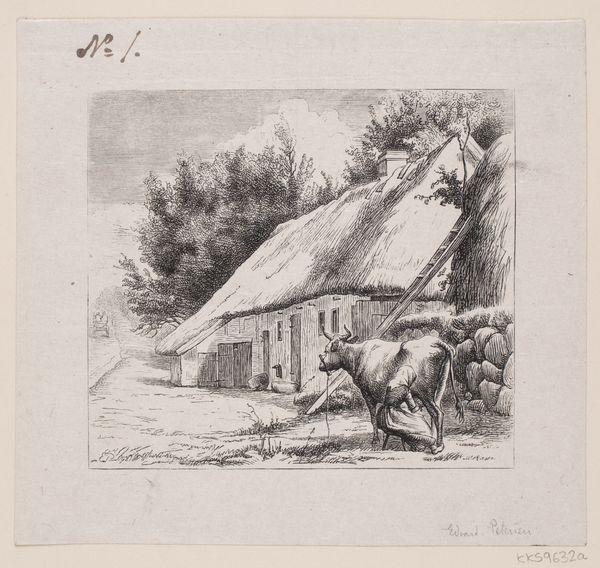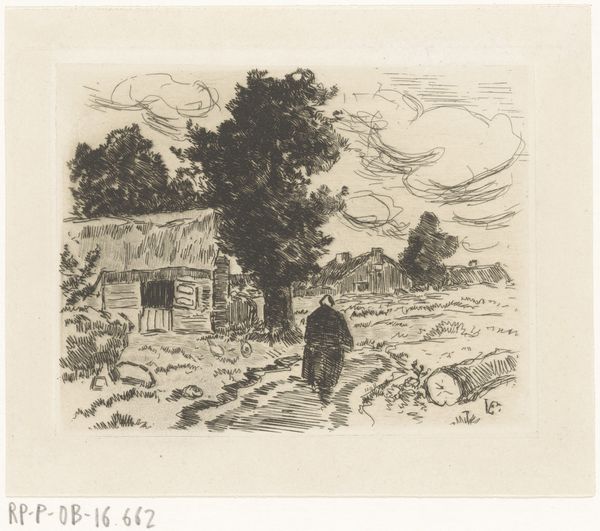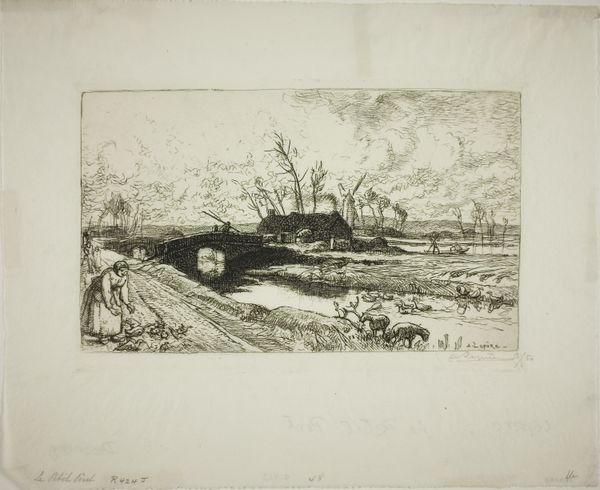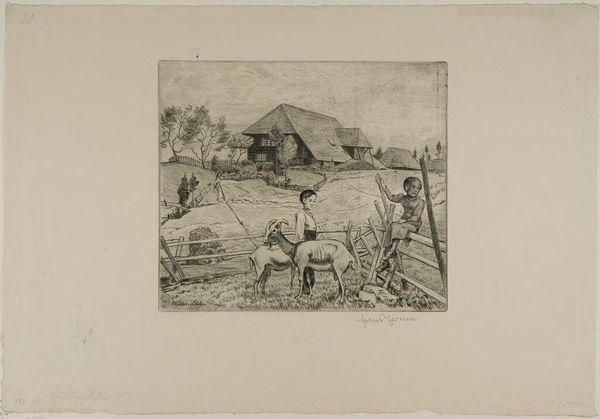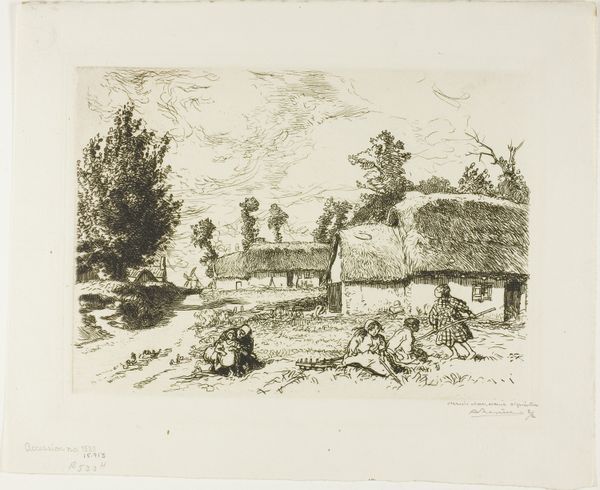
Dimensions: 197 × 238 mm (image); 204 × 244 mm (plate); 259 × 293 mm (sheet)
Copyright: Public Domain
Auguste-Louis Lepère made this print, The Flooded Marais: The Shepherd, probably in the late 19th or early 20th century using etching. What I notice first is the incredible detail achieved through a network of delicate lines. It gives the whole scene a kind of shimmering, atmospheric quality. The lines vary in thickness and density, creating different tones and textures. Look at how he renders the water with these horizontal strokes, suggesting its reflective surface. Then, compare that to the more chaotic lines used for the foliage and trees, which gives them a sense of volume and depth. Lepère really knew how to orchestrate marks to create a mood. The stark contrast between light and shadow is also pretty remarkable. Notice how the dark areas around the figure really makes them pop, almost like a spotlight. It reminds me a little of some of the landscape work of Camille Pissarro, who was also experimenting with printmaking around this time. It just goes to show how artists were exploring new ways of capturing the world around them. What really gets me going is that these artists were actively shaping how we perceive and experience landscape today.
Comments
No comments
Be the first to comment and join the conversation on the ultimate creative platform.

